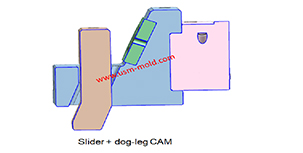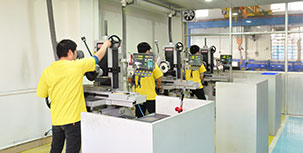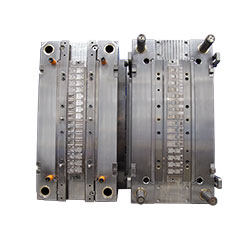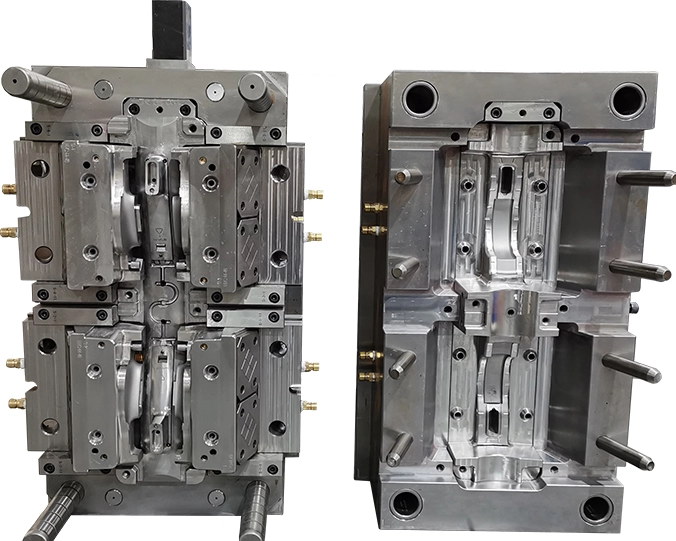Key points of plastic injection mold runner system
The sub-runner is a transitional channel between the main runner and the gate, as the sub-runner is the longgest part of gating system, so it is very important to enhance the parts quality and improve the productivity by reducing sub-runner process and flow resistance.
Sub-runner requirements:
① Bring the air in the gating system and the cold material at the front side of the melt into the cavity as less as possible to improve the molding quality.
②The runner resistance to the melt should be small, and the volume flow rate should be large to reduce the pressure and temperature loss when the melt flows through the runner.
③The solidification time of the runner should be later than the solidification time of the melt in the cavity to facilitate feeding.
④Ensure that the melt enters each cavity or every corner of the same cavity quickly and evenly.
⑤ The length of the runner should be as short as possible, and its volume should be as small as possible.
⑥The shape and size should be convenient for processing and tool selection.
⑦The upper-level runner is 10%~20% larger than the next-level runner.
Factors affecting the sub-runner design:
①The geometric shape, wall thickness, size, stability, internal quality and appearance quality requirements of plastic parts.
②The variety of plastics, that is the fluidity, melting temperature and melting temperature range, solidification temperature and shrinkage rate of the plastic.
③The pressure, heating temperature and injection speed of the injection molding machine.
④ Falling off method of main runner sub runner.
⑤The cavity layout, the gate location and type.
Key points of sub-runner design:
Cross-sectional area: as small as possible under the conditions of the injection process.
Distribution: compact and symmetrical, minimize the total area of the forming area.
Shape: The ratio of cross-sectional area to perimeter is as big as possible.
Length: as short as possible; the length of the runners of each cavity should be as equal as possible.
Steering: as few times as possible and rounded transitions.
Roughness of the inner surface: It is not necessary to be very light, so that the outer layer of the material flow forms a cooling layer for heat preservation, Ra=0.8~1.6μm.
Condensate ejection: This is particularly desirable when a sprue puffier is used when sub-runner is in cavity side or it is long.
The end of the sub-runner should be provided with a cold well and exhausting-slot .


Temperature system of injection mold
Feb 8, 2022Hi everyone,the mold cooling time is the longest during injection, so the design of mold temperature system controlling is very important, we will talk about mold cooling, heating system in following...view
Classification of side parting and core pulling mechanism
Jul 17, 2022According to the structural characteristics of plastic moulding, the side core-pulling mechanisms are divided into the following six categories: 1. The side core-pulling mechanism of "slider + guide...view
Five Major Steps of the Injection Mold Production Process
Dec 9, 2021Injection mold manufacturing can be roughly divided into the following steps: Process analysis of plastic products. Before the mold design, the designer should fully analyze and study whether the...view
Insert pin of vengting design for molded parts
Mar 20, 2022Insert pin of venting: It is difficult to make exhaust slot when end runner is not in parting surface during injection, and there is no matching gap available, but we could make the venting pin at end...view
Different treatment of plastic injection mold cooling system principles
Feb 22, 2022Different treatment principle: 1. The mold temperature is different according to the different plastics, when the plastic requires the molding temperature of the mold to be ≥80°C, the mold must be...view
The sub gate of the plastic injection mold runner system
Jan 26, 2022In order to get the best injection quality, the gate type must be selected carefully, the coommon gate tyeps are: direct gate, side gate, pin-point gate, sub gate,valve gate of hot runner etc. Among...view
 English
English русский
русский



